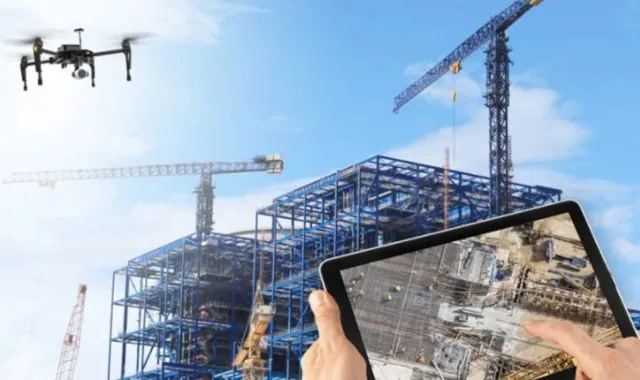Physical Address
304 North Cardinal St.
Dorchester Center, MA 02124
Physical Address
304 North Cardinal St.
Dorchester Center, MA 02124

Construction technology is revolutionizing the way we build structures, from skyscrapers to residential homes. In this article, we’ll delve into the intricacies of construction technology, exploring its definition, evolution, key components, applications, future trends, challenges, and impact on the construction industry.
Construction technology encompasses the tools, techniques, and processes used in the construction of buildings and infrastructure. It’s not just about hammers and nails anymore; it’s about leveraging cutting-edge innovations to streamline construction processes and enhance project outcomes.
Construction technology refers to the application of advanced methods and equipment to improve efficiency, safety, and sustainability in construction projects.
Construction technology plays a vital role in addressing challenges such as cost management, labor shortages, and environmental concerns. By adopting innovative technologies, construction companies can achieve higher productivity and quality standards.
Construction technology has evolved significantly over the centuries. From the use of simple tools in ancient times to the mechanization of construction processes during the Industrial Revolution, the industry has undergone remarkable transformations.
In recent decades, advancements in materials science, robotics, and digitalization have propelled construction technology to new heights. Today, construction companies leverage sophisticated tools like Building Information Modeling (BIM), robotics, drones, and 3D printing to revolutionize the way projects are planned, designed, and executed.
BIM is a digital representation of a building’s physical and functional characteristics. It allows architects, engineers, and contractors to collaborate more effectively throughout the project lifecycle, resulting in better coordination and fewer errors.
Robots are increasingly being used in construction for tasks such as bricklaying, welding, and site inspection. Robotic systems improve precision, speed, and safety on construction sites, reducing the risk of accidents and injuries.
Drones are used for aerial surveys, site mapping, and progress monitoring in construction projects. They provide real-time data and insights, enabling project managers to make informed decisions and optimize workflows.
3D printing technology enables the fabrication of complex architectural elements and building components with unprecedented speed and accuracy. It has the potential to revolutionize the construction industry by reducing waste and construction time.
Construction technology enables the adoption of sustainable practices such as green building design, renewable energy integration, and waste reduction. Sustainable construction minimizes environmental impact and maximizes resource efficiency.
Prefabrication involves manufacturing building components off-site and assembling them on-site. This approach reduces construction time, labor costs, and material waste while improving quality and consistency.
Construction technology enhances safety on job sites through the use of wearable sensors, safety drones, and automated equipment. By identifying hazards and mitigating risks proactively, construction companies can create safer working environments for their employees.
By streamlining processes and optimizing workflows, construction technology improves project efficiency and productivity. Digital tools such as project management software, scheduling algorithms, and IoT sensors enable real-time monitoring and control of construction operations.
Artificial intelligence (AI) is poised to transform the construction industry by automating repetitive tasks, predicting project outcomes, and optimizing resource allocation. AI-powered systems can analyze vast amounts of data to identify patterns and make data-driven decisions.
Virtual reality (VR) technology enables stakeholders to visualize and experience construction projects before they are built. VR simulations allow architects, clients, and contractors to explore design options, detect errors, and optimize layouts in a virtual environment.
Augmented reality (AR) overlays digital information onto the physical world, enhancing collaboration and communication on construction sites. AR applications enable workers to access real-time instructions, visualize building components, and perform remote assistance tasks.
The adoption of construction technology often requires significant upfront investment in equipment, training, and software licenses. Cost considerations can pose challenges for smaller firms and contractors with limited financial resources.
The rapid pace of technological change in the construction industry has created a skill gap among workers. Many construction professionals lack the training and expertise needed to effectively utilize advanced technologies, hindering their adoption and implementation.
Resistance to change, regulatory constraints, and interoperability issues are common barriers to the adoption of construction technology. Overcoming these barriers requires collaboration between industry stakeholders, government agencies, and technology providers.
Construction technology drives economic growth by improving productivity, reducing costs, and accelerating project delivery. It creates new job opportunities in fields such as digital design, data analysis, and robotics engineering.
Construction technology promotes sustainability by optimizing resource use, minimizing waste, and mitigating environmental impacts. Green building practices, renewable energy systems, and smart infrastructure solutions contribute to a more eco-friendly built environment.
Construction technology enhances safety, quality, and accessibility in the built environment, benefiting communities and society at large. By delivering projects more efficiently and sustainably, construction companies can improve the quality of life for residents and stakeholders.
In conclusion, construction technology is reshaping the way we build and inhabit our cities. From digital design tools to robotic construction crews, the possibilities are endless. By embracing innovation and overcoming challenges, the construction industry can unlock new opportunities for growth, sustainability, and prosperity.